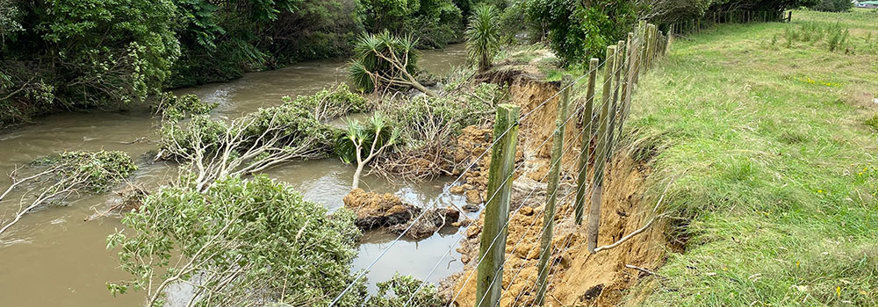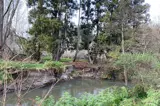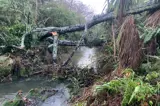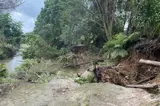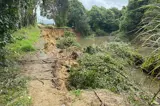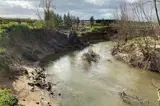Intense rainfall can quickly flood rivers, bringing down trees, causing erosion and other damage.
When this occurs, unless the river forms part of a ratepayer funded flood scheme, it’s likely the landowner will need to remedy any problems themselves. This includes fallen trees if they are blocking the natural flow of a waterway (the owner of the land where the tree fell from is responsible).
These guidelines set out the rules, obligations and incentives available when it comes to flood-debris, debris-dams, streambank erosion, fallen trees, or trees about to fall into a waterway.
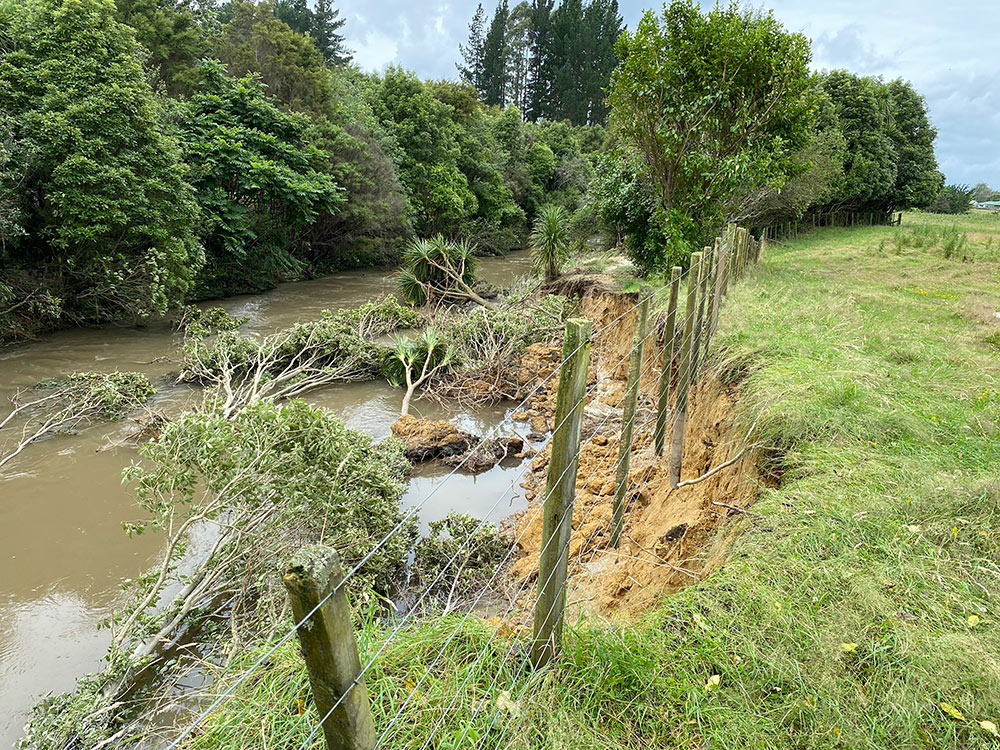
Allowing room for rivers to move naturally
Rivers and streams are dynamic natural systems that change over time depending on rainfall, groundwater levels, geology, soils, bed material, slope, land use, vegetation, objects within the bed of the waterway and objects within the floodplain. Although most streams and rivers have been modified in the past, we now recognise the importance of allowing room for rivers to move naturally.
Doing works yourself
All works, whether they are carried out by landowners, contractors or Council, must comply with regional rules or consent conditions. These protect the riverbed and the species that call it home by limiting disturbance where possible. If you do need to do works in waterbody, for example weed removal or clearing a culvert, make sure you check the Beds of Water Bodies rules, or call our duty consents planner on 0800 884 880 for advice about whether the planned work is permitted or requires resource consent.
Getting ahead of stream erosion
Funding and advice is available for work to improve water quality and protect biodiversity, especially in our Focus catchments. Learn more about what’s available through our Environmental Programme Grants Policy.
Examples of land and river edges impacted by heavy rain
Please note: where required, all problems identified in these examples were remedied by landowners not Regional Council.
Flood schemes
Regional Council has overall responsibility for managing rivers and streams in the region. It is also the owner, manager and operator of several flood control schemes which are funded by targeted rates. If a stream on your property has been impacted by flooding and/or erosion and the property is located within one of our schemes please get in touch with the Rivers and Drainage Operations Team on 0800 884 880.

